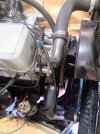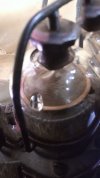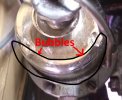Knightowl61
Gold Level Sponsor
I like the idea of the original pump with the sight bowl & manual pump lever. I bought the kit from SS and used the diaphram but the check valves seem to be leaking after the engine warms up.
Question - how do you pull the check valves out? I tried prying with a screwdriver and twisting with needlenose pliers to the point that something might break and I'll never get them out.
Question - how do you pull the check valves out? I tried prying with a screwdriver and twisting with needlenose pliers to the point that something might break and I'll never get them out.



